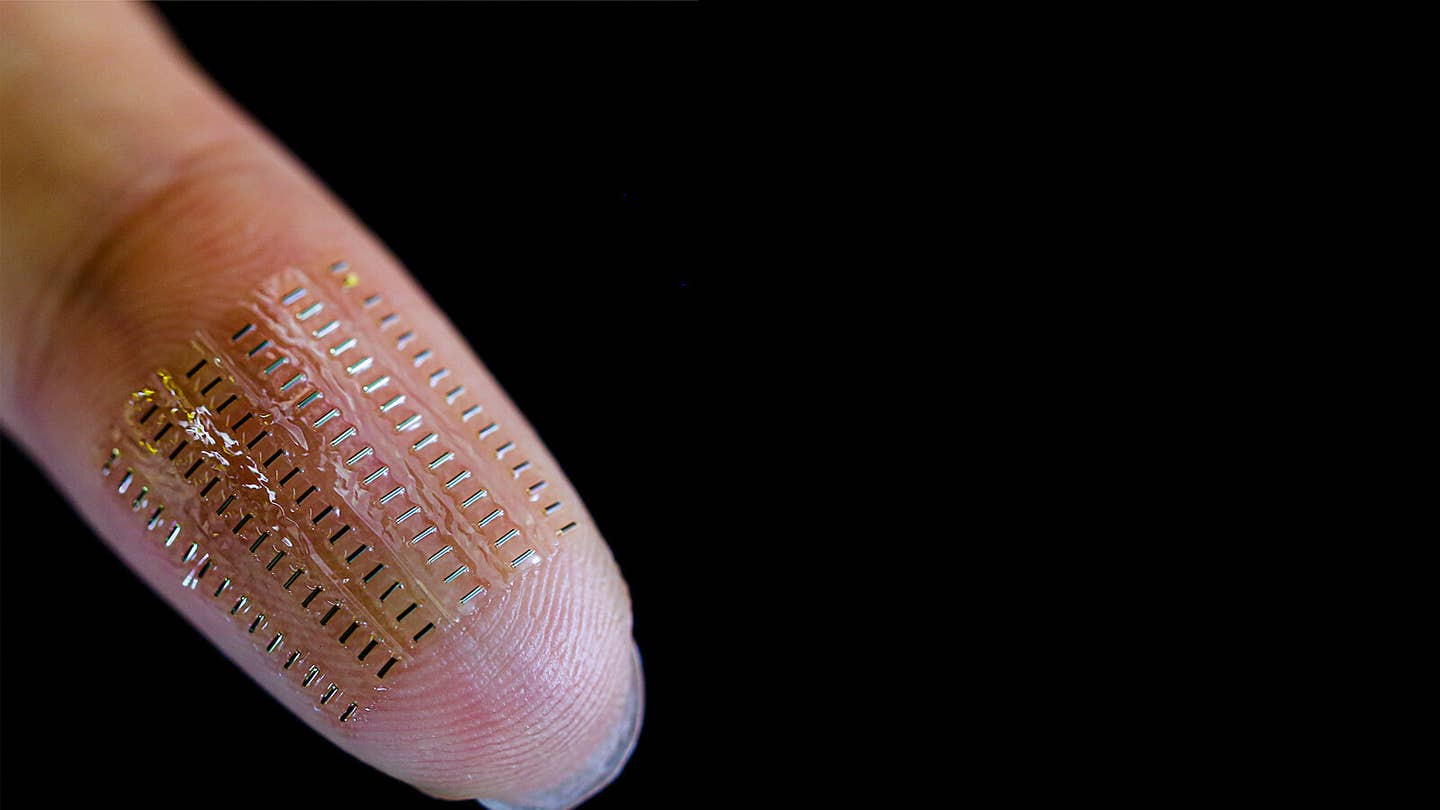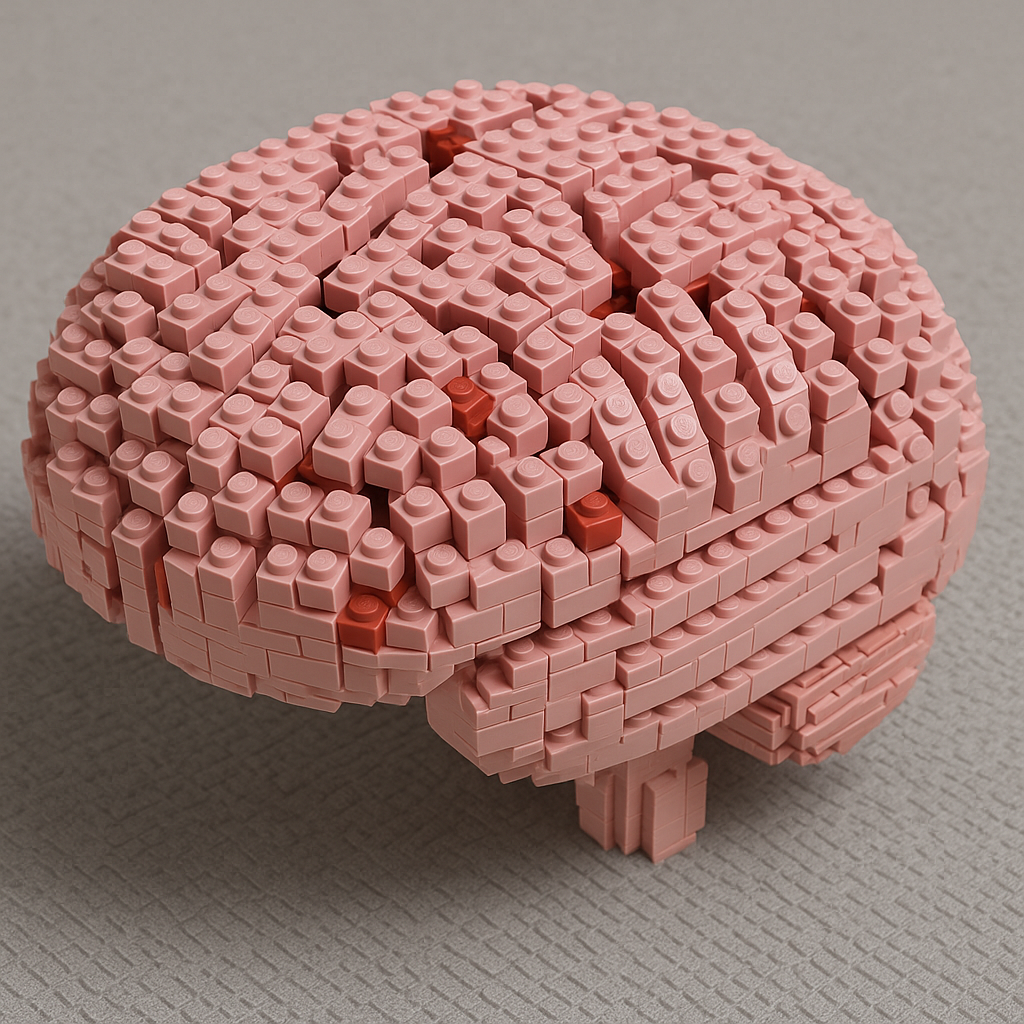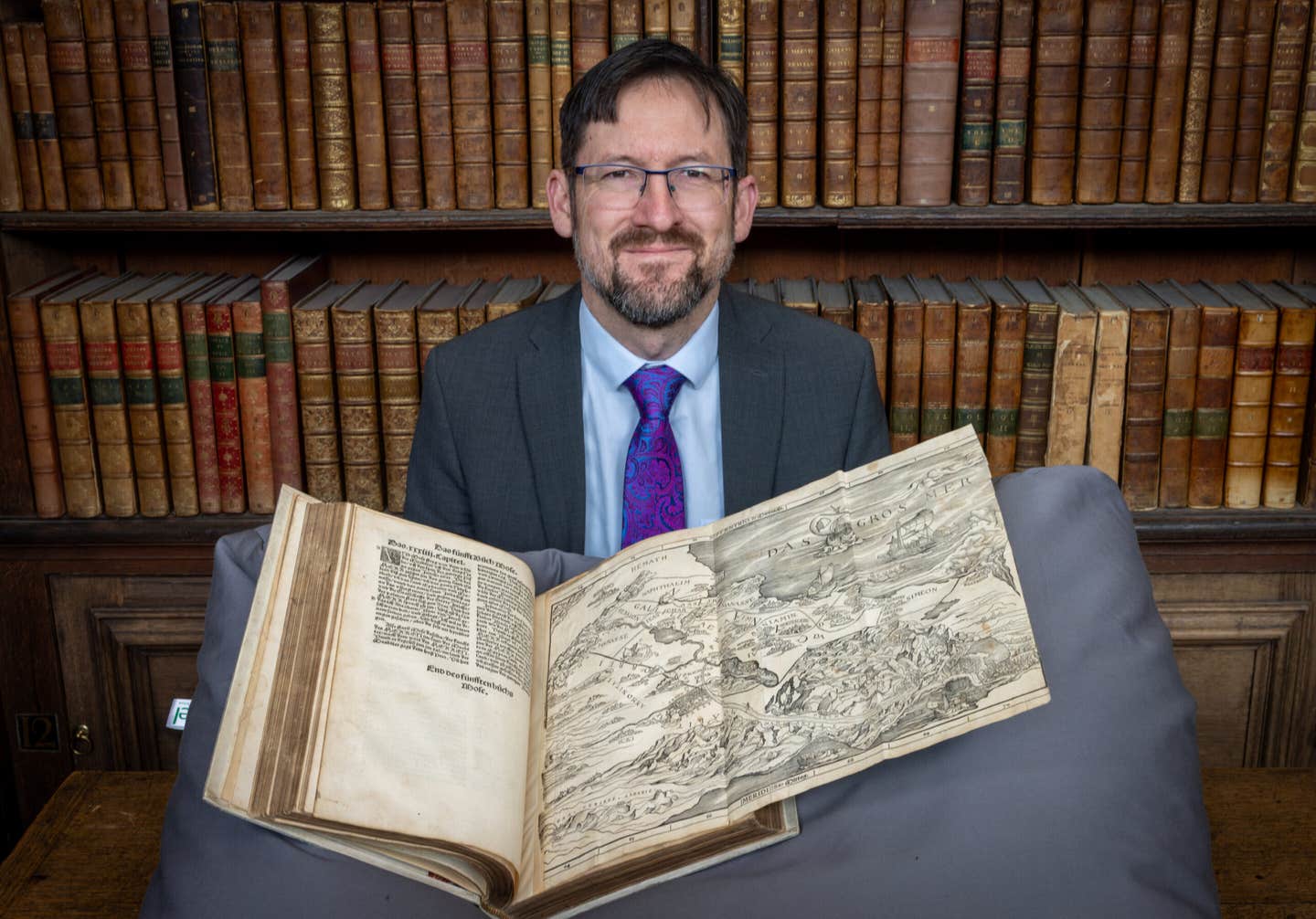World’s smallest battery works in blood to power medical sensors
Scientists build the tiniest power source yet—a nano-biosupercapacitor that works in blood and could fuel future medical nanorobots.

An array of 90 tubular nano-biosupercapacitors (nBSCs) on the fingertip enable autarkic operation of sensors in blood. (CREDIT: Research Group Prof. Dr. Oliver G. Schmidt)
For decades, scientists have imagined creating tiny devices that could travel through the human body, bringing medical tools to places too small for surgery. A major obstacle has been power. How do you run a miniature system, no bigger than a speck of dust, deep inside blood vessels or tissues? Batteries are too bulky, and wires are out of the question. Now, an international team has unveiled a device that might solve this problem.
Researchers led by Prof. Dr. Oliver G. Schmidt from Chemnitz University of Technology, together with colleagues at the Leibniz Institute for Solid State and Materials Research Dresden and the Leibniz Institute of Polymer Research Dresden, have built the world’s smallest working energy storage system designed for the body. Their results introduce a “nano-biosupercapacitor,” or nBSC, that could one day power miniature medical robots and sensors.
A Thousand Times Smaller Than Previous Devices
Until recently, the smallest so-called micro-supercapacitors were still several cubic millimeters in size. That is far too large to fit safely into narrow blood vessels. The new prototype, however, is just 0.001 cubic millimeters, or one nanoliter—about 3,000 times smaller than earlier models. To give perspective, it is smaller than a grain of dust.
Even at this scale, the nBSC produces up to 1.6 volts of electricity in blood. That voltage is comparable to what you might get from a AAA battery, though the actual current is much weaker. Still, for powering tiny sensors, that is more than enough.
The Strength of a Tubular Shape
One of the clever design features is its shape. Instead of being flat, the device is rolled into a tiny tube using what the researchers call “Swiss-roll” Origami technology. By layering materials under high stress and then releasing them, the sheets curl up on their own into neat cylinders. This shape gives the device strength against squeezing from blood flow or muscles.
It is not just tough, though. The hollow inner core of the tube also acts as a channel through which blood plasma can flow. That makes it especially suited for integration with sensors that analyze the chemical properties of blood.
Related Stories
- Generative AI designed 5 new battery materials - more powerful and sustainable than lithium
- Tiny nuclear battery produces 50 years of power on a single charge
Powered by Biology Itself
Supercapacitors often suffer from one major flaw: they lose stored charge over time, a problem known as self-discharge. The new nBSC solves this in a surprising way—by working together with the body. Redox enzymes and even living cells in the blood interact with the device, boosting its performance by about 40 percent. These natural helpers make the capacitor hold its charge longer and recharge more efficiently.
Dr. Vineeth Kumar, a researcher on Schmidt’s team, called this a first potential solution to the long-standing challenge of powering tiny systems in the body. The team showed that in blood, the nBSC could keep almost one volt even after many hours, something other micro-devices have not achieved.
Stability in Real-World Conditions
To make sure the new supercapacitor could withstand the real environment of the body, the researchers tested it under conditions that mimic flowing blood. They used microfluidic channels as small as 0.12 millimeters across to simulate vessels of different sizes, with liquid moving at realistic rates.
The nBSC held up well, even after 5,000 cycles of charging and discharging. It also endured compression tests, showing it would likely remain stable against pulsating pressures inside the body. In experiments with blood plasma, it retained around 70 percent of its charge after 16 hours.
A Sensor Powered From Within
To prove its usefulness, the team connected the nBSC to a miniaturized pH sensor system. Blood pH, which measures acidity, can reveal important signs of health. Abnormal pH levels may be linked to conditions such as tumor growth. The researchers built a tiny transistor-based circuit sensitive to pH and powered it entirely with the nBSC.
When placed in blood plasma, the integrated system successfully detected pH changes, all without an external power source. According to Schmidt, it was encouraging to see how flexible microelectronics are beginning to merge with biological systems.
Because the device is intended for use inside the body, the researchers worked under strict ethical guidelines. All experiments with blood samples were approved by an ethics committee, and donations were given with informed consent. This careful approach highlights the responsibility of merging technology with biology.
Where the Future Could Lead
The success of this nano-biosupercapacitor points toward a future of tiny medical machines. Picture robotic sensors traveling through veins, checking chemistry in real time, or implants that never need a battery replacement. Continuous monitoring of blood pH alone could help doctors detect cancer earlier than is now possible.
The team also notes that adding anti-fouling coatings might prevent clots from forming around the devices, making them safer for long-term use. Future designs could link several nBSCs together to provide higher power, or combine them with other types of microelectronics for even more advanced tools.
Prof. Schmidt believes that integrating flexible, adaptive electronics into the smallest biological systems marks an exciting step forward. The fact that a speck-sized capacitor can power a working sensor in blood is evidence that science is closing in on long-held dreams of medical nanorobots.
Practical Implications of the Research
This study paves the way for medical devices that can function without bulky batteries or wires. By harnessing energy from within the body and working with biological processes, these nano-biosupercapacitors could power implants, sensors, or microrobots deep in tissues or vessels. That could mean earlier detection of diseases such as cancer, more precise monitoring of health, and new options for treatments delivered directly where they are needed.
The research also expands what is possible in nanotechnology, offering tools that blend engineering with biology in ways that could benefit medicine for years to come.
Research findings are available online in the journal Nature Communications.
Note: The article above provided above by The Brighter Side of News.
Like these kind of feel good stories? Get The Brighter Side of News' newsletter.



